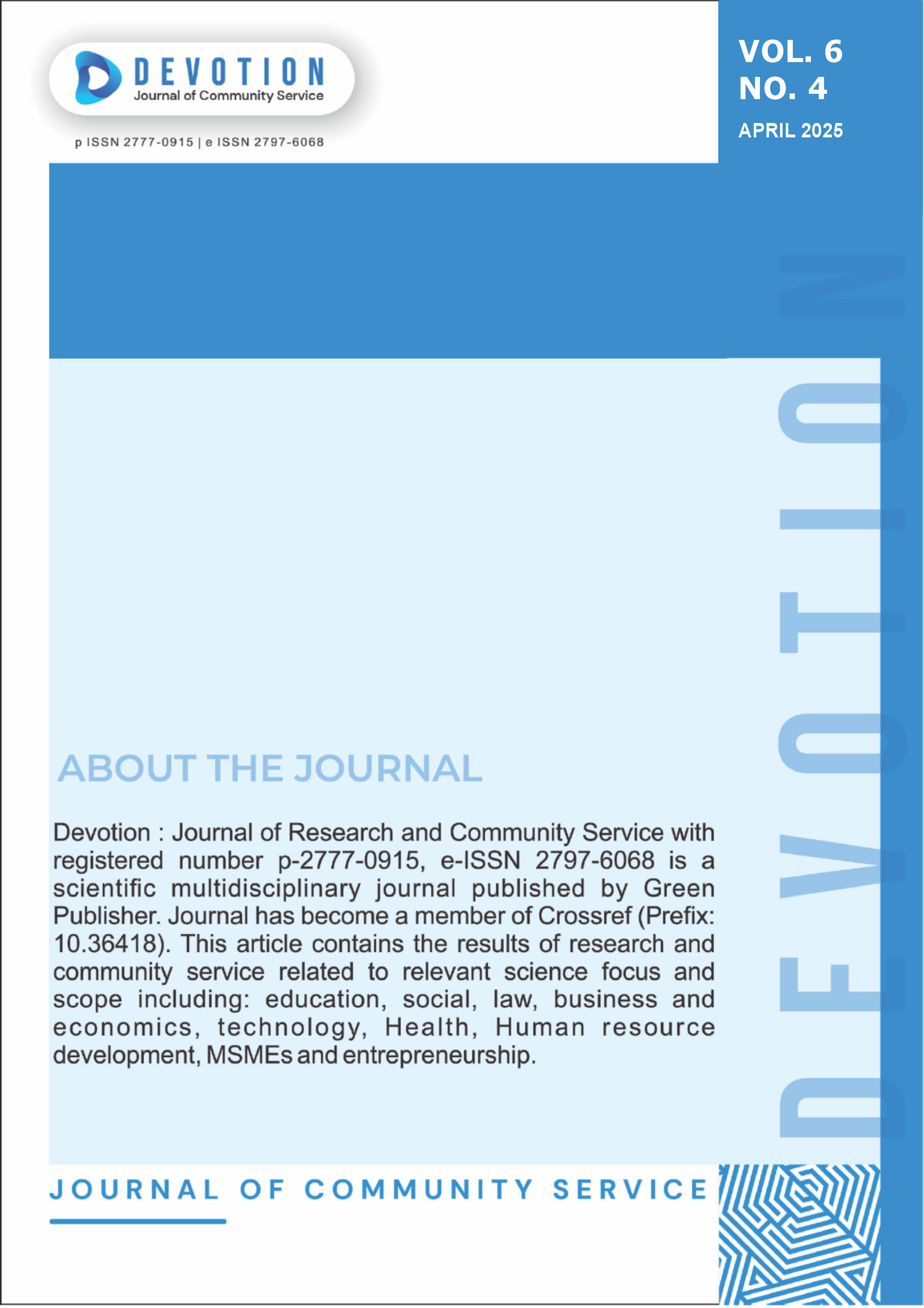Analysis of Road Damage Factors Based on Vehicle Load and Volume on K.H. Zaenal Arifin Road Segment Cikulak – Cibogo
DOI:
https://doi.org/10.59188/devotion.v6i4.25454Keywords:
Road damage, Pavement Condition Index (PCI), traffic volume, vehicle load, overlay thicknessAbstract
Road damage on K.H. Zaenal Arifin Cikulak–Cibogo, characterized by potholes, crocodile cracks, and flooding, disrupts traffic and safety and is exacerbated by heavy vehicle loads and poor maintenance. This study analyzes damage factors (vehicle load, traffic volume) and assesses pavement conditions to recommend repair methods. A quantitative approach with field surveys, visual documentation, and PCI analysis was employed, supported by traffic volume conversion to passenger car units (smp) and ESAL calculations. The PCI score of 42 ("fair") reflected significant damage, with ESAL values indicating excessive axle loads (407,188). The key contributors were peak traffic (1,971 vehicles/hour) and inadequate pavement thickness. The study advocates for immediate repairs (e.g., patching, 7 cm overlay) and policy interventions to regulate vehicle loads. Future research should integrate sustainable materials and dynamic load modeling.
Downloads
Published
Issue
Section
License
Copyright (c) 2025 Nur Solahudin, Muhammad Daffa Putra Susanto

This work is licensed under a Creative Commons Attribution-ShareAlike 4.0 International License.
Authors who publish with this journal agree to the following terms:
- Authors retain copyright and grant the journal right of first publication with the work simultaneously licensed under a Creative Commons Attribution-ShareAlike 4.0 International. that allows others to share the work with an acknowledgement of the work's authorship and initial publication in this journal.
- Authors are able to enter into separate, additional contractual arrangements for the non-exclusive distribution of the journal's published version of the work (e.g., post it to an institutional repository or publish it in a book), with an acknowledgement of its initial publication in this journal.
- Authors are permitted and encouraged to post their work online (e.g., in institutional repositories or on their website) prior to and during the submission process, as it can lead to productive exchanges, as well as earlier and greater citation of published work.













